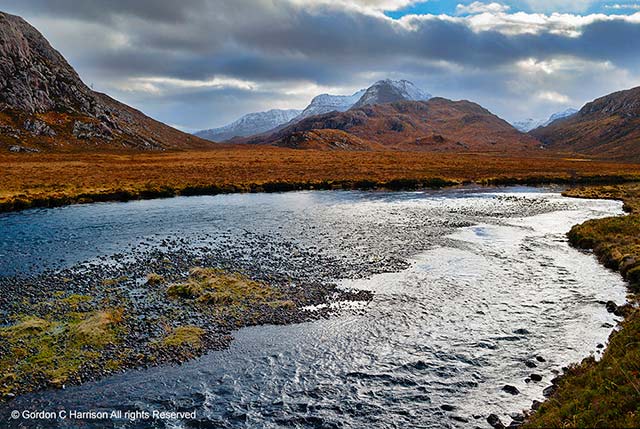
Gruinard River and Great Wilderness Mountains
Mention Scotland and most people will conjure up thoughts of one or more of the following; kilts, bagpipes, castles, haggis, whisky, Robert Burns, clans, Hogmanay, highland mountains, and lochs. For such a small country, these extraordinarily rich and diverse set of cultural icons are instantly recognised throughout the world.
The area of Wester Ross, on the north-west coast of Scotland, is particularly renowned for its stunning beauty, extensive wilderness areas of imposing mountains as well as an Atlantic seaboard fractured by a myriad of sea lochs and studded with beautiful islands both large and small.
While all of Scotland’s west highlands are beautiful, Wester Ross is regarded by most as the jewel in the crown. The clash between the prevailing Atlantic westerlies and the west coast mountains creates an infinitely variable climate that transforms the area into a landscape photographer’s paradise. This is one of those places on planet Earth that you should visit at least once!
Wester Ross Communities
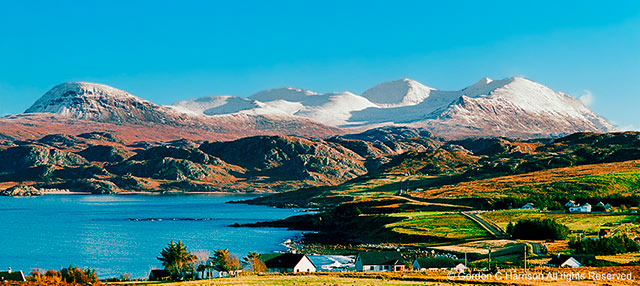
Laide Village, Gruinard Bay and An Teallach
From my early boyhood, photographing Scotland’s landscapes has been a longstanding passion, so when my wife and I relocated to Laide 20 years ago, I was excited about creating images of the area. This small village in the NW Highlands overlooks Gruinard Bay which in turn is surrounded by a panorama of mountains both near and far.
There are no large towns in Wester Ross. People live in villages, often quite tiny. The largest village by far, Ullapool, has a population of about 1,300. Villages are separated from each other by areas of wilderness through which will pass a connecting road, often just a single track with places where one can pass. Yet this does not lead to a feeling of isolation. There is a very strong sense of community and unlike cities where one can live almost anonymously, even to one’s immediate neighbours, here in the Highlands people living 10-15 miles away in the next village are often known as well as the neighbours next door.
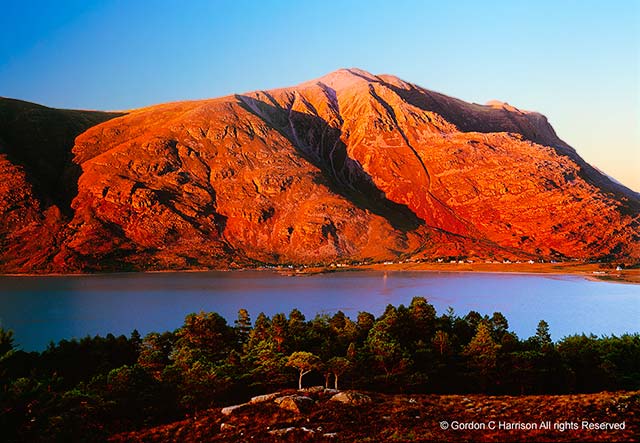
Torridon, a highland village, gives a sense of the wilderness in which such villages exist. They are often located by a loch, frequently dominated by a mountain, in this case Liathach, and just cry out to be photographed when the light is right.
The economy of the area is largely based on tourism. Along with accommodation providers such as hotels, you will find that many of the local people have transformed their homes into bed and breakfast businesses.
On arrival I chose to provide picture framing services to the local community, along with marketing my passion for photography – selling products via local outlets, galleries and craft fairs.
Language and Place Names
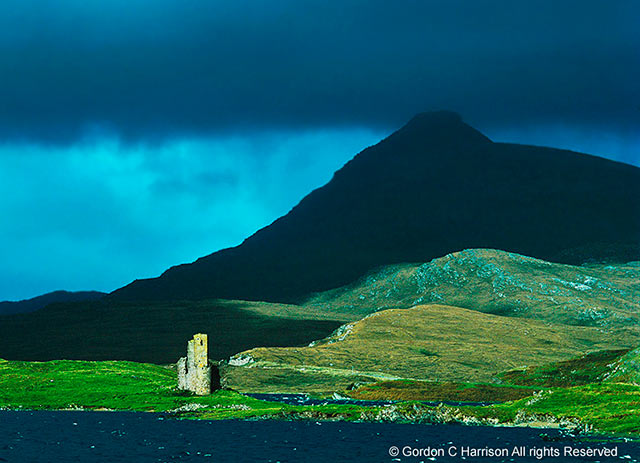
Storm at Ardvreck Castle, Loch Assynt and Quinag
Actually this is just beyond the northern border of Wester Ross in Sutherland, but is not to be missed.
The language spoken is English, but many of the older people grew up in a time when their first language was Gaelic and English was learned as a second language. As you travel round the Highlands you will find that roadside signs are bi-lingual with place names given both in English and Gaelic.
As the Vikings colonised Scotland’s west coast from the 8th to 15th centuries, they have had a considerable influence on place names. Many have Viking or hybrid Viking and Gaelic roots, such as An Teallach, Beinn Airigh Charr, Mellon Udrigle, Liathach, Quinag. Even though you may not understand their deep rooted meanings, which can easily be researched online, they have, in my view, an exotic and poetic quality that adds to the charm of west highlands.
Getting Around – Your Options
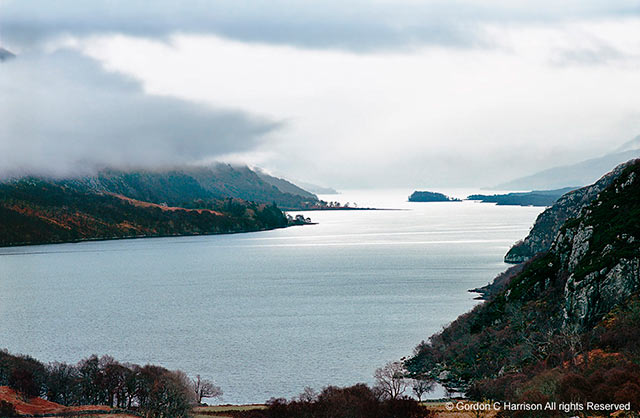
Loch Maree and Witches Point – viewed from a place known as Tollie.
The easiest and most convenient way for photographers to get around with their gear is to have one’s own transport, such as renting a car. You’ll have access to many scenic photographs from or very near the roadside.
Public transportation by bus or an even more limited train service to the west highlands and Wester-Ross is certainly available, but because it is limited, you’ll need to plan your time carefully.
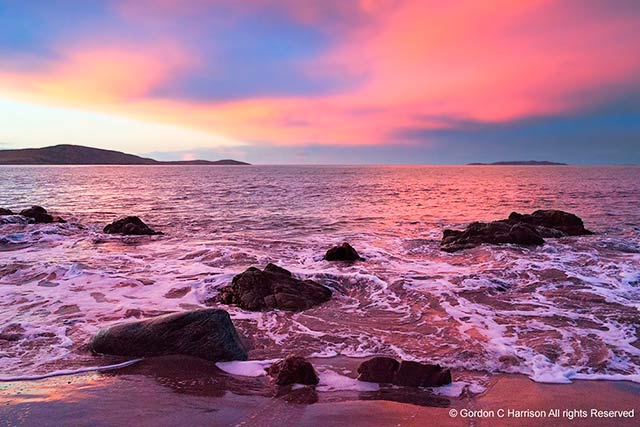
Sunset Over Gruinard Bay – viewed from a small cove at First Coast.
If you don’t mind carrying your camera gear on long treks, then backpacking is of course an option. This will enable to you to visit true wilderness areas that cannot be reached by any other means.
People will often hitch-hike around the area. Now, I have no doubt that you have been told never to hitchhike or pick up a hitchhiker, but from my experiences, I have found that it is quite safe in this area. I often pick up hitch hikers and enjoy hearing about life in their own country as well as their views of Scotland. Usually one can pick up lifts from place to place without too much trouble.
Note: Part 2 of this article will have a link to travel information, a map, accommodation providers, and other essential information if you plan to visit the Wester Ross.
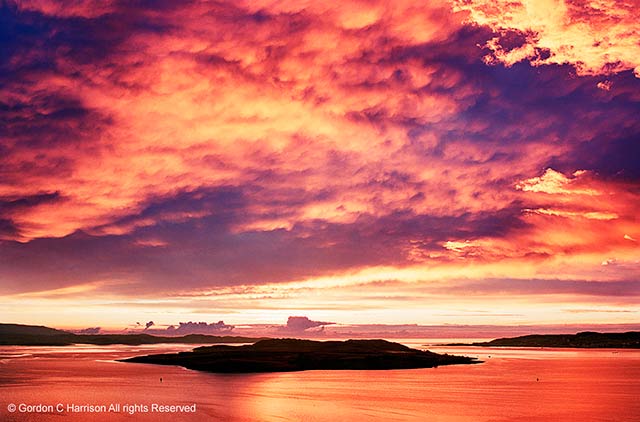
Loch Ewe Sunset – from the road between Aultbea and Poolewe.
Weather
A mountainous terrain facing an Atlantic seaboard can only mean one thing – extreme variable weather patterns that can range from the sublime to the utterly horrendous, often within the space of a single day!
So no matter the season, do come prepared to encounter bad weather. In the summer (and winter too) you may be lucky and hit a spell with one or two weeks of sublime sunny weather every day and you will think my warnings have been pointless. On the other hand you could be unlucky and encounter an entire week of rain or snow.
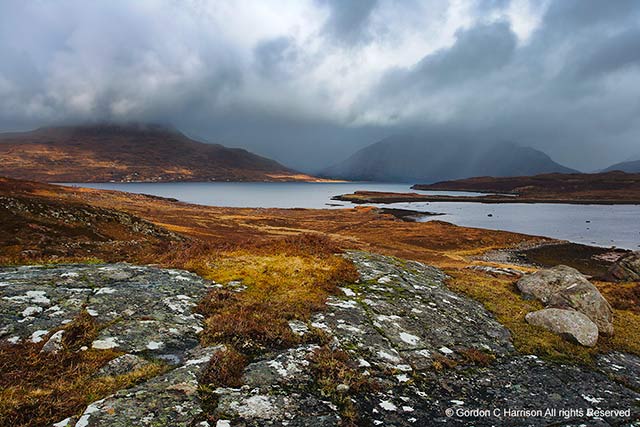
Showers Passing Over Loch Torridon
Don’t get discouraged if the clouds roll in and the rains fall. Those times when the weather patterns are changing can often lead to the most stunning atmospheric images. So while wet dull weather can depress ones spirit, it can also be the harbinger of that magical, once in a lifetime photo that we photographers all dream about!
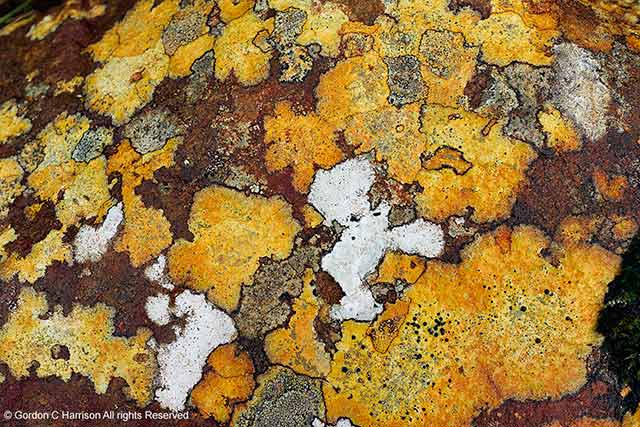
Lichen on a Rock: Don’t forget that on overcast or wet days macro images can often come to the rescue of what might otherwise be a blank photo day.
High Country Winter Treks
Winter can bring more severe weather conditions, especially in the mountainous areas where deep snow and severe cold can be encountered. It can be very dangerous with the additional risk of avalanches. Only those that are well trained and experienced for such conditions should venture out into the high country wilderness during this time of the year.
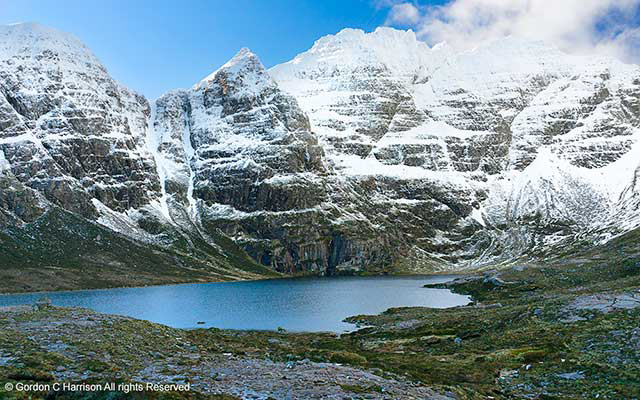
It took a trek of several hours to reach this magnificent view of some of the peaks of An Teallach.
Roads usually are clear to drive (with care) in the winter, but occasionally the police will close certain roads over high ground that they consider un-driveable. This may mean a long detour to get to your destination, or even in some rare cases, there may be no alternative route.
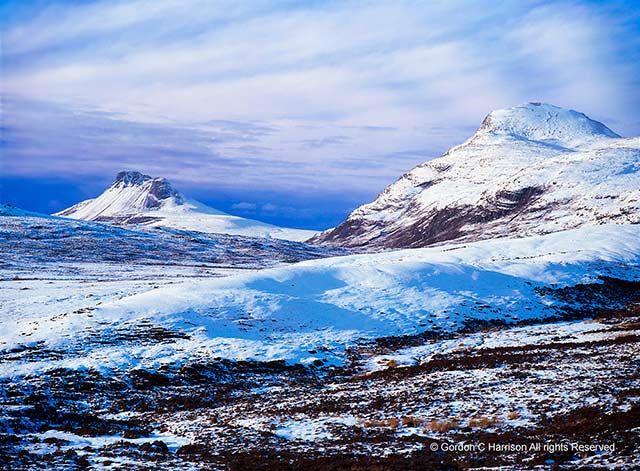
Stac Pollaidh & Cul Beag: This photo may look as if I hiked into the wilderness, but in fact, it was made by standing close to the roadside approximately 30 miles north of Ullapool.
In part 2, I’ll take you on photo adventures in the villages and wilderness.
by Gordon Harrison
Article and photos: © 2014 Gordon Harrison. All right reserved.

Leave a Reply